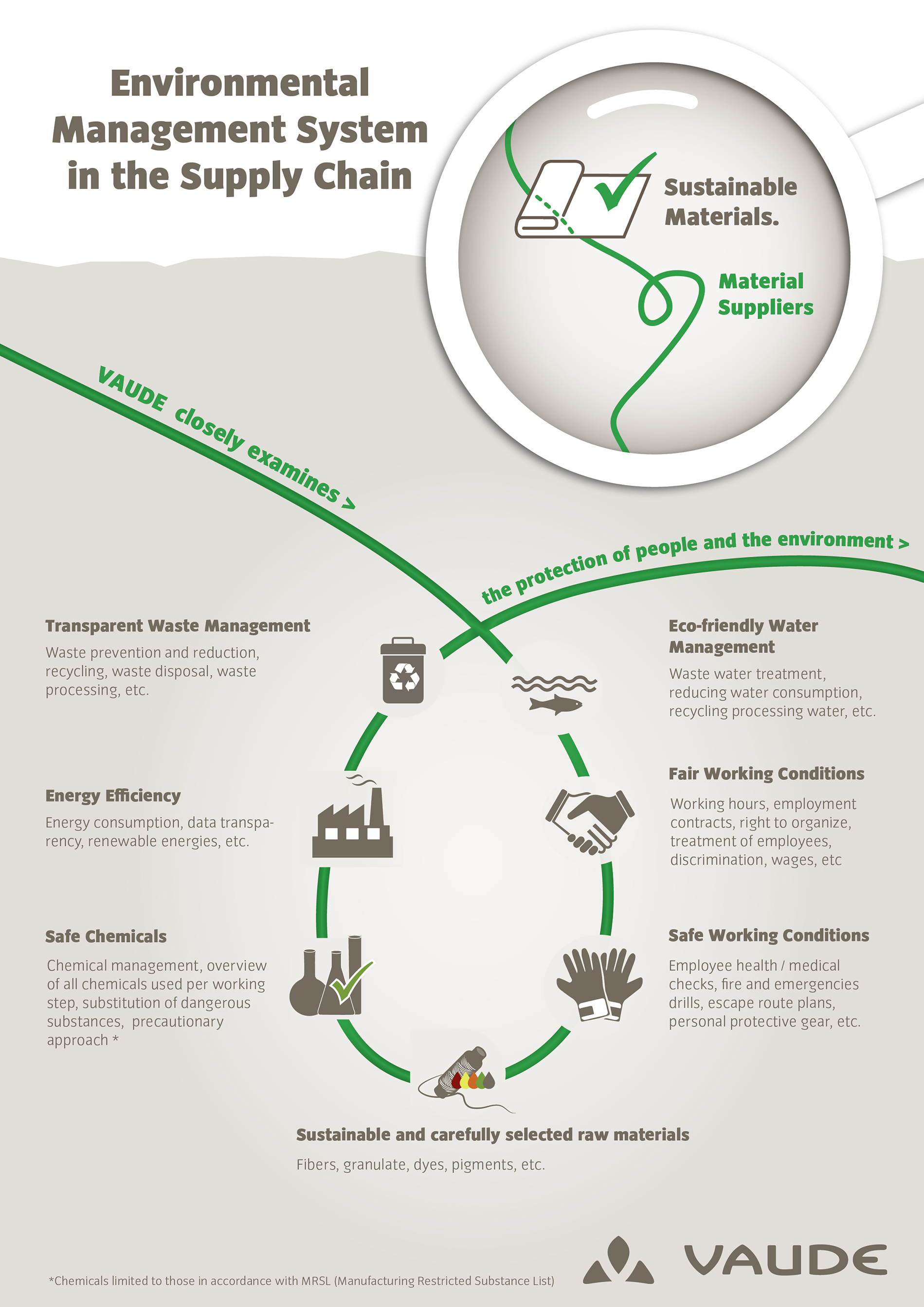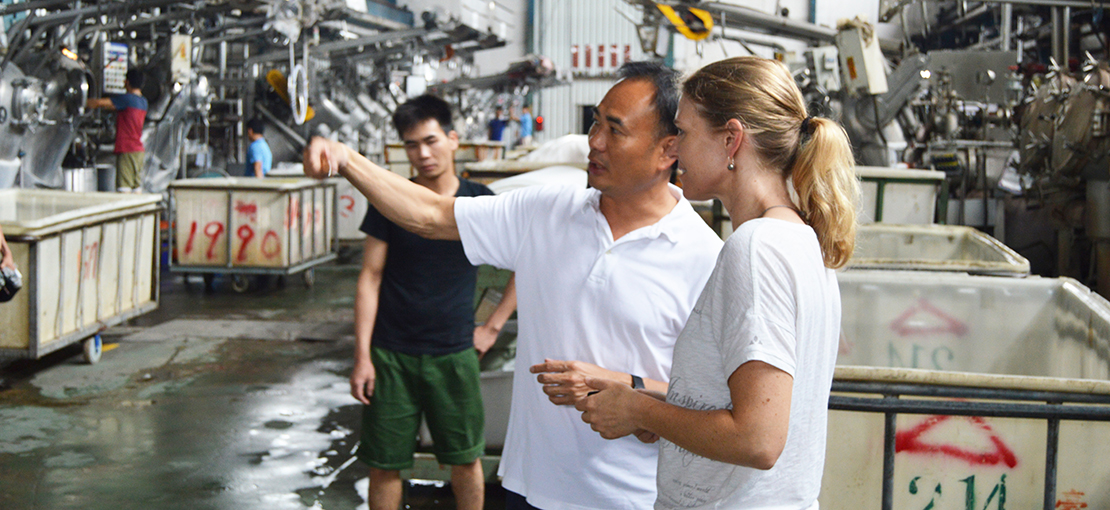
Suppliers as partners
From project to strategic environmental management in the supply chain
VAUDE is also consistently moving towards more sustainability by raising awareness, training and providing support for environmental management in the supply chain. We have already done a great deal of pioneering work in the industry in this area and are on the right track.
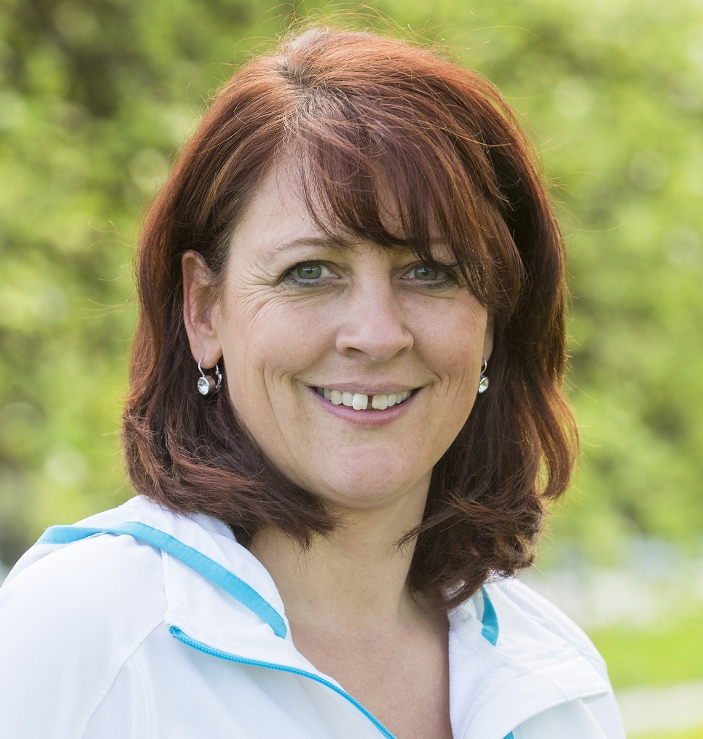
»Our experience shows that suppliers are very willing to implement environmental technologies when they become aware of the dangers to people and the planet that their older methods entail. Instead of simply testing finished products for hazardous substances, we go down this truly sustainable path together with our suppliers «
Backgrounds and details here
Material manufacturing is often problematic from an ecological perspective
In its supply chain, VAUDE differentiates between producers (manufacturers of ready-made clothing, Level 1) and material suppliers (Level 2). We only have a direct (contractual) business relationship with our producers. However, we stipulate the selection of material manufacturers to a large extent – see Our Supply Chain.
In production, the materials are then assembled to create the VAUDE finished product (sewn, HF welded, etc.). This, of course, consumes energy, water and chemical additives, and creates waste, wastewater and emissions.
Pilot project for a higher level of environmental protection
However, the most serious environmental impacts occur in the upstream stages of production: the manufacturing of textile materials and even further upstream to the cultivation of plant fibers or the mining of raw materials such as oil, from which synthetic fibers are obtained.
These production steps are very resource intensive. The consumption of water, energy, materials and chemicals, as well as emissions such as wastewater and exhaust have a major impact on the environment and the people living there.
Focusing on a higher level of environmental protection
Despite our current high standards, there is still much room for improvement when it comes to environmental and resource protection, compliance with international environmental standards and the implementation of a systematic environmental stewardship program.
As a founding member of the federal government’s "Partnership for Sustainable Textiles" VAUDE is setting a good example and heading in the right direction: In collaboration with the Federal Ministry of Economic Cooperation and Development (BMZ) VAUDE launched the project "Environmental Stewardship in the Textile Supply Chain" in 2015. Within the framework of the Deutsche Entwicklungsgesellschaft DEG, which promotes the “develoPPP.de" program, VAUDE supports material suppliers in introducing sustainable systematic environmental protection and in continuing to improve the measures they already have in place.
More details on the project
The aim of the project was to sensitize and empower selected material suppliers of VAUDE in the Asian procurement markets (e.g. Vietnam, China, Taiwan) so that they can more easily meet our environmental requirements.
The factories and their employees received practical assistance for independently implementing measures with regards to corporate environmental and sustainability management. Helping them help themselves.
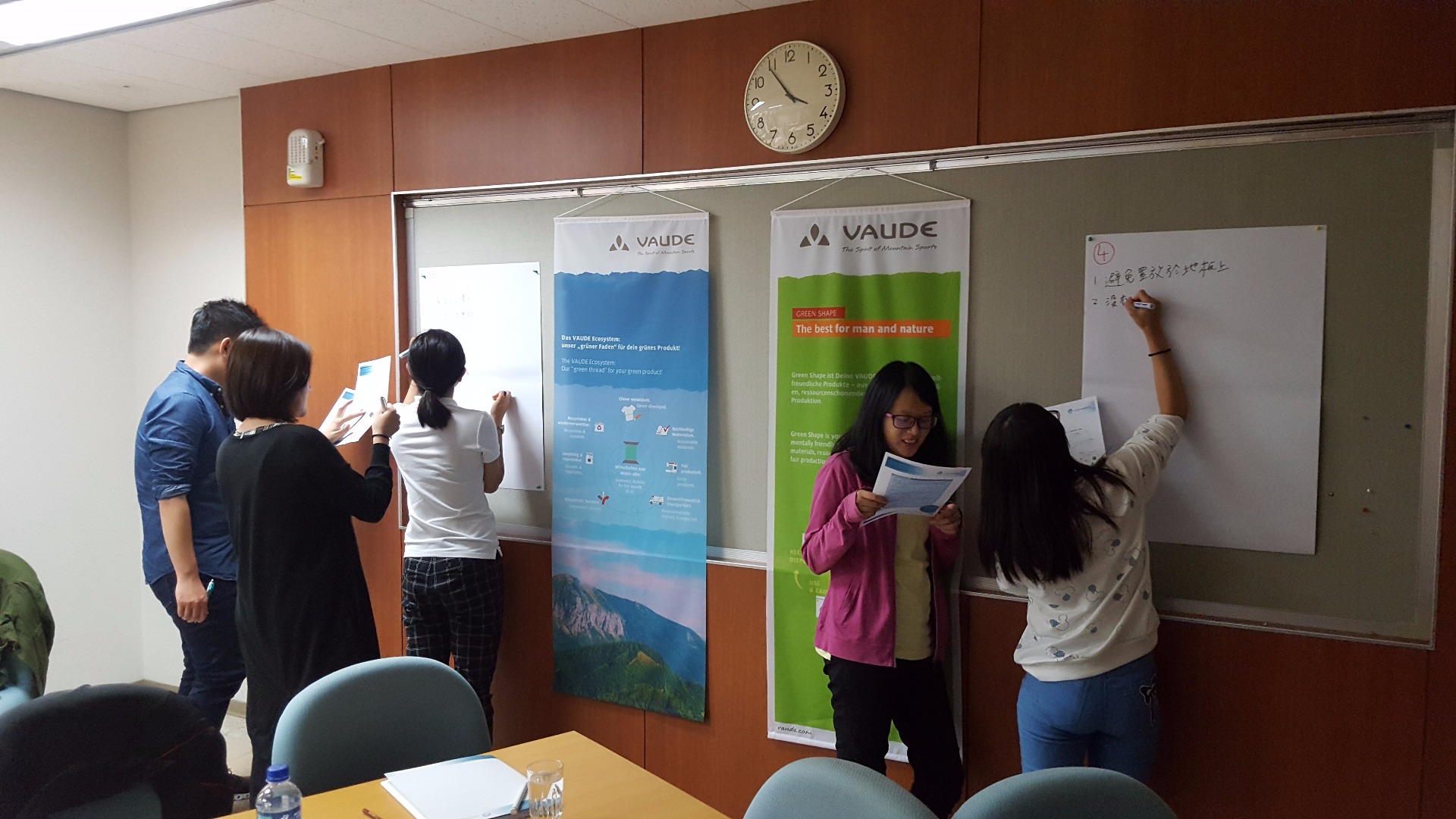
We want the companies to recognize the advantages inherent in clean production: healthier employees, higher product quality, better living conditions in the region, and last but not least, a reference as a qualified producer for international competition, which can be used for winning new customers.
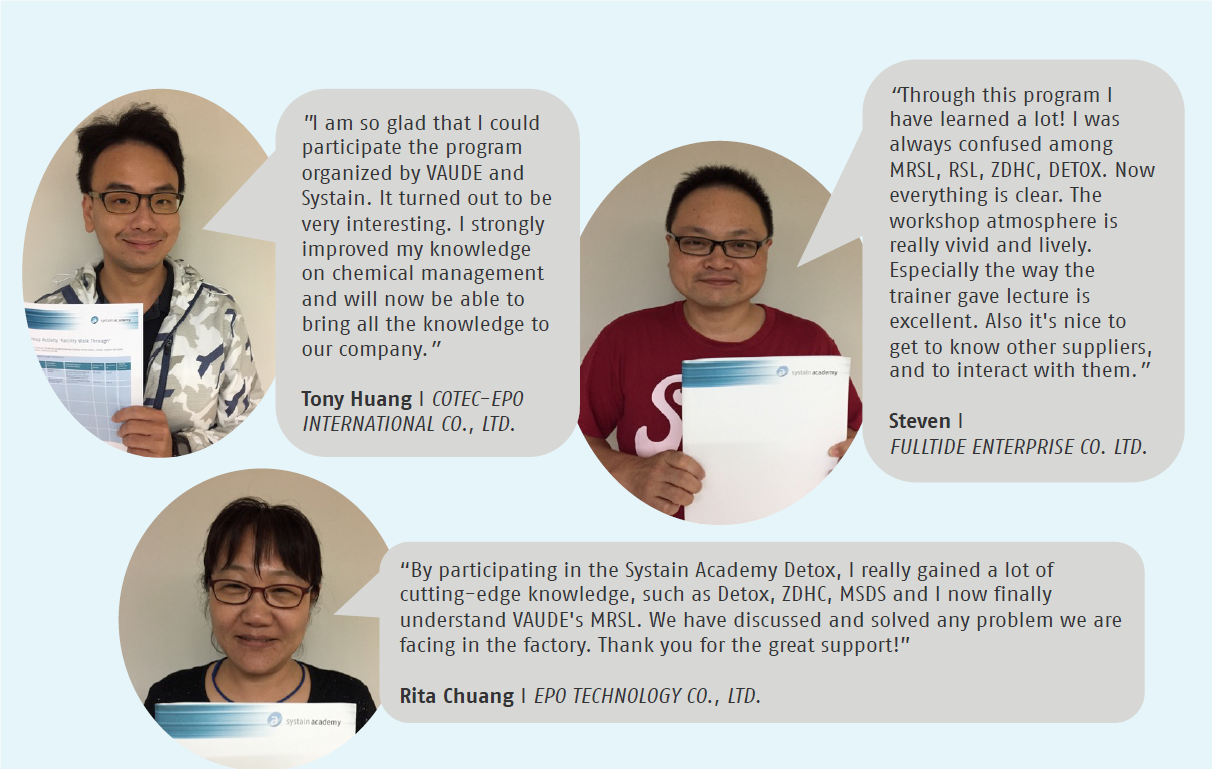
Best Practice examples of participants and discussions with experts help to establish practical relevance for the facility and allay reservations for the participants.
What did the project involve?
- Taking stock with supplier self-assessments and evaluation by VAUDE using external experts
- Selection of ten pilot suppliers
- The creation of assistance and training materials (documents in local language, graphics, explanatory films)
- Implementation of training and individual consultations on-site in the local language
- Evaluation and anchoring of the results in the respective facilities, including responsibilities distributions and monitoring systems
- Promotion and strengthening of synergies through networking of suppliers among each other and with external experts, publication of findings from the project
What did we do?
Create your own infographicsWhat did we achieve?
The improvements achieved by the 8 participating material suppliers were in some cases significant.
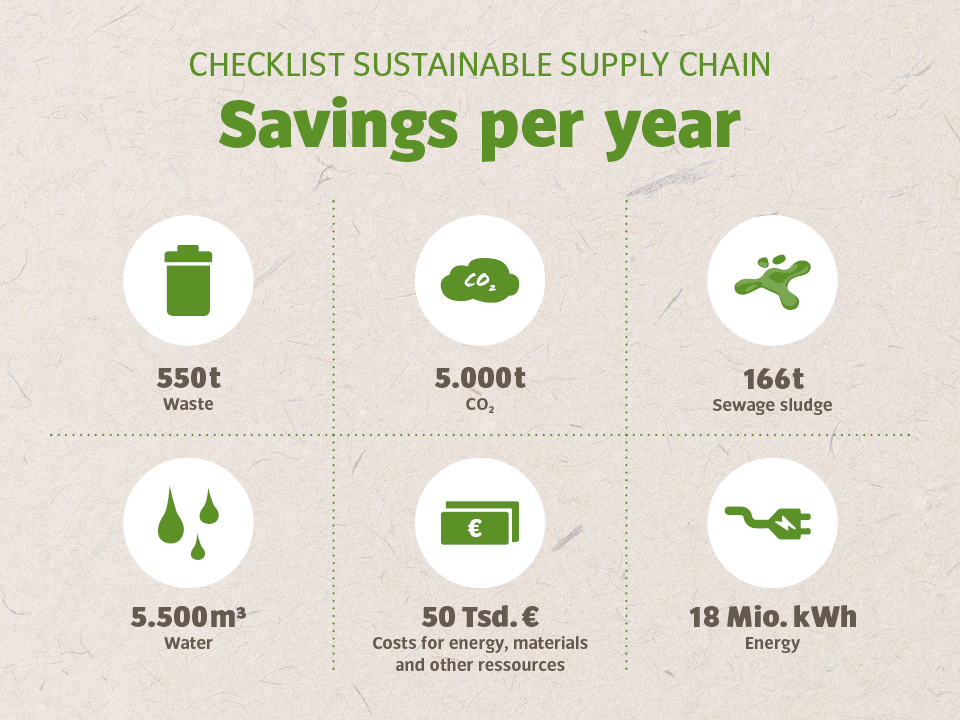
The project was very ambitious and lasted two years. The project ended in August 2017, and we now want to extend it to the entire supply chain. We are trying to find other outdoor brands interested in this approach in order to achieve a greater number of suppliers and thus even greater environmental protection in our supply chain.
With this project, we were nominated for the CSR Award of the Federal Government in the category: Responsible Supply Chain Management.
From project to strategic environmental management in the supply chain
The knowledge gained in this project is now part of our supplier management program, which covers the areas of environment, social affairs and quality.
In the area of environmental management, we are currently pursuing the main topics:
- Water/wastewater management
- Chemicals management
- Energy management
- Waste management
The VAUDE Vendor Club format emerged from the project. This involves events in each country of production that serve to intensively address environmental and social issues together with other suppliers, external experts and VAUDE employees. This can take the form of lectures, workshops or sharing examples of best practices. This open and honest communication leads to a better understanding of the concerns of all parties, to the joint definition of future steps and the monitoring of effectiveness. Only together and in partnership can we implement topics such as science based targets or climate neutrality of our products and the supply chain.
Committed to compliance with standards
All VAUDE producers are contractually obligated to comply with ecological minimum standards. This includes, among other things, the Manufacturing Restricted Substance List - MRSL.
Using VAUDE's internal Material Policy, we make a pre-selection of materials and technologies and influence the selection of our material suppliers.
Through the system partnerships of many of our material suppliers with bluesign® system and through the Fair Wear (FW) we are very familiar with the situation, the weak points and development opportunities of most of our producers and material suppliers.
Selection and evaluation of VAUDE producers subject to a well-thought-out process that follows strict criteria (see also Supply Chain)
More at:
- "VAUDE Product Philosophy"
- "Energy - Preferably Renewable"
- "Water Consumption in Production"
- "Little Chance for Pollutants"
- "Reducing Waste"
- "Shipping and Receiving"
- "Climate Neutral in Tettnang"
- "Why Biodiversity is Important to us"
| GRI: | 308-2 |
| GRI: | 103 |

